Engaged learning is a core theme of UVU, and it is central to the mission of the Field Station. Engaged learning is much more than interesting content. It provides students with hands-on experiences with what they're studying. It provides real-world context and applications for classroom knowledge.
The following are samples of groups that have visited the Field Station in the past. Submit a reservation request to bring your class to visit.
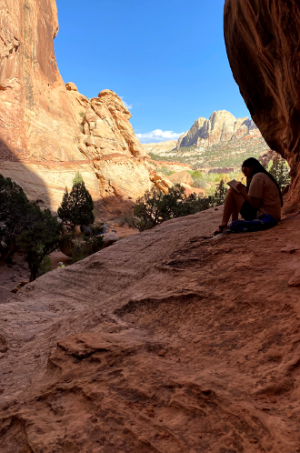
Dr. Meaghan McKasy was able to bring the first for-credit course to the field station in over a year when she brought her Environmental Communication course. Students participated in daily hikes and solitary journaling as well as a graffiti removal service project in Grand Wash and an extended conversation with Lori Rome, then Chief of Interpretation at Capitol Reef National Park. Meaghan relates:
“CRFS was the perfect setting for this experiential education to take place. … I believe that being able to teach a course like this during a global pandemic made it so much more meaningful. Many of my students commented that they hadn’t had face-to-face courses in the last year and how great it was to be able to interact with classmates and professors again. I also acknowledge that if this was a regular year, the class size would have more than doubled. Having the smaller class made for an intimate and unforgettable experience. I do not believe I will ever teach a course quite like this again (though one can always dream) and I am greatly appreciative to CRFS for hosting.”
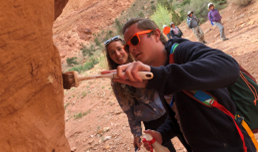
Dr. Diane Kamola, a faculty member at the University of Kansas, takes students on a summer geology field camp throughout the American Southwest. They love to stay at the field station where they are provided an unparalleled experience in place-based learning. As Diane tells it:
“Surrounded by vistas of red Moenkopi cliffs and resistant towers of earth-toned sandstone, KU geology students learned to map geologic features in the most picturesque sedimentary strata imaginable. Geologists are used to remote locations which expose rock outcrops, but nothing compares to the expansive exposures at Capitol Reef National Park. With Brunton compasses, topographic maps and airphotos in hand, geology students spent their days exploring the rocks and learning the skills required to map geologic structures. Being able to stay at the field station made all this possible
“I’ve said this many times: I can’t think of a better place to stay when teaching the principles of geologic mapping. Students are immersed in geology at the Field Station,with vertical cliffs of cross-bedded eolian sandstone surrounding the field station and views of both Boulder Mountain and the Henry’s. This coupled with the isolation and serenity of the Field Station allowed the students to be completely absorbed in geology. The total picture promotes a passion for geology and one in which there is no effort to become completely engaged in the learning process. Students were constantly in awe of the vistas and the clarity of exposure of geologic features that previously had been seen only in textbooks. Their visit to the Capitol Reef National Park and the Field Station resulted in an intense personal engagement with their chosen field of study. Thank you for allowing our students this great learning opportunity.”
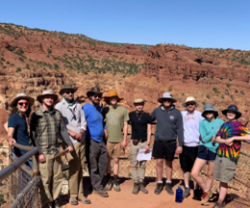
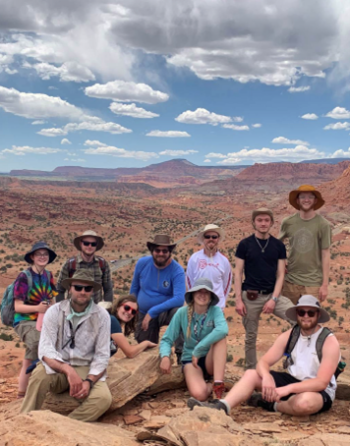
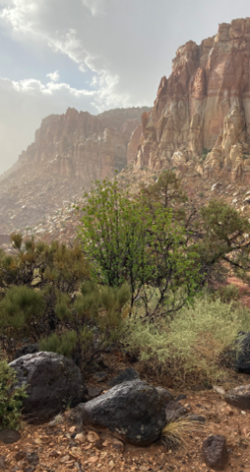
Even when closed, the field station can still provide engaged learning experiences for students! During the spring semester, UVU faculty member Brandon Truscott worked with three students, Bronwyn Hays, Garris Parker, and Dallin Stoeltzing. Each of them created a CRFS brand style guide as part of initial considerations of a full rebrand for the station. Brandon describes the project:
“We began the development of a potential rebranding campaign for the Capitol Reef Field Station by researching the existing brand presence. Successful integrated branding helps organizations clearly communicate their core values. It helps organizations to increase recognition among potential patrons and build loyalty among existing ones. With the ever-growing options of media, the need for compelling and consistent branding is stronger than ever before. The starting point was an identity audit. The students evaluated the current Capitol Reef Field Station identity for consistency, continuity and positioning. They analyzed the strengths and weaknesses. They assisted in identifying organization identity issues. The students evaluated brand architecture and the visual standards system across all organization materials.
“In the final phase, the graphic design students created style guides for the Capitol Reef Field Station that included examples of; logos, typefaces, graphics, icons for annual reports, website page mockups, informational materials, stationery, signage, t-shirts, etc. It was a successful partnership between UVU students, faculty and staff.”
In fact, we liked the designs so much they are serving as the basis for a full rebrand project that we’re embarking on!
UVU alumnus, Mark Ensign, remembers going on trips to the field station during courses he took while attending UVU. Now as a teacher at Karl G. Maeser Preparatory Academy, he took his own students back to the field station. Students were asked to think about the following questions: 1) How does life survive in an environment with little or no water?, 2) What can we learn from what our ancestors have left behind?, 3) Can humans realistically live a zero-footprint life?, and 4) What are ways that I can reduce my ecological impact? During their stay, they explored the historical, ecological, and geological aspects of the area.
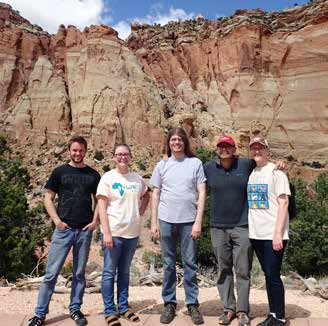
Dr. Nathan Toké from UVU led a group of students to the field station as part of a Spring 2017 Geomorphology course (GEO/ GEOG 3500). They came to observe the fluvial geomorphology and river terraces of Pleasant Creek, which runs near the field station. They were able to achieve all of the objectives for their trip, and Dr. Toké reported:
“After returning to UVU, three of the field trip students used the data from the trip to complete a term project about the geomorphology of Pleasant Creek. Clearly, this visit to the field station added a lot of value to their geomorphic education and some of the data collected may be utilized in the future as a part of a scientific paper on the geomorphology of Pleasant Creek!”
The field station hosted visitors from the University of Utah’s Parks, Recreation, and Tourism department for the first time. Trip organizer Chris Zajchowski summarized their trip:
“University of Utah students and faculty from Parks, Recreation, and Tourism (PRT) program were thrilled to visit the Capitol Reef Field Station from April 10th – 14th. From the initial orientation and hike in Pleasant Creek, all the way through star gazing and the final recycling activity, we were challenged by Field Station staff, Gina Gilson, to deeply engage with place and interact sustainably with this unique resource. At the culmination of our five-day experience, twenty-eight undergraduate students shared that this was the highlight of their entire semester. Once back in Salt Lake City, students continued to echo this sentiment, and shared they simply couldn’t imagine this semester without a visit to the Capitol Reef National Park and the Utah Valley University Field Station.”
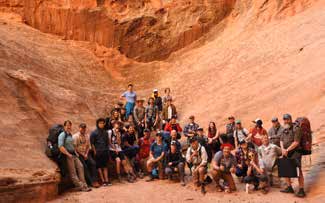
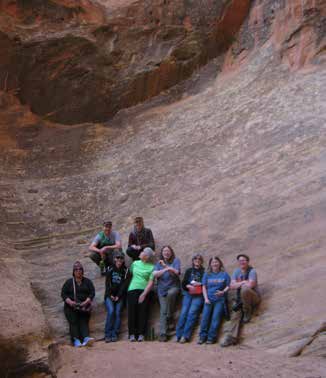
Kathryn MacKay from the Weber State University History Department brought a group of students to the field station as part of an experimental history class studying the American West. They came to better understand human occupation in the region prior to 1300, and to better understand national parks and their impacts. Kathryn reported:
“I had a vague notion that the field station would also be a prime location for participants to consider issues of sustainability and scarcity in the American West. The stay at the station went beyond my expectations in developing consciousness about water and resources. I find myself deliberately using less water and trying to create less trash! I know from talking to participants – many are doing the same.
“The field station – its setting, its physical space, its staff – proved a stunning way for participants to be more mindful of many of the issues in the American West. It was a way to get beyond the textbooks and classroom discussions and to be physically engaged in big questions about people and place.”